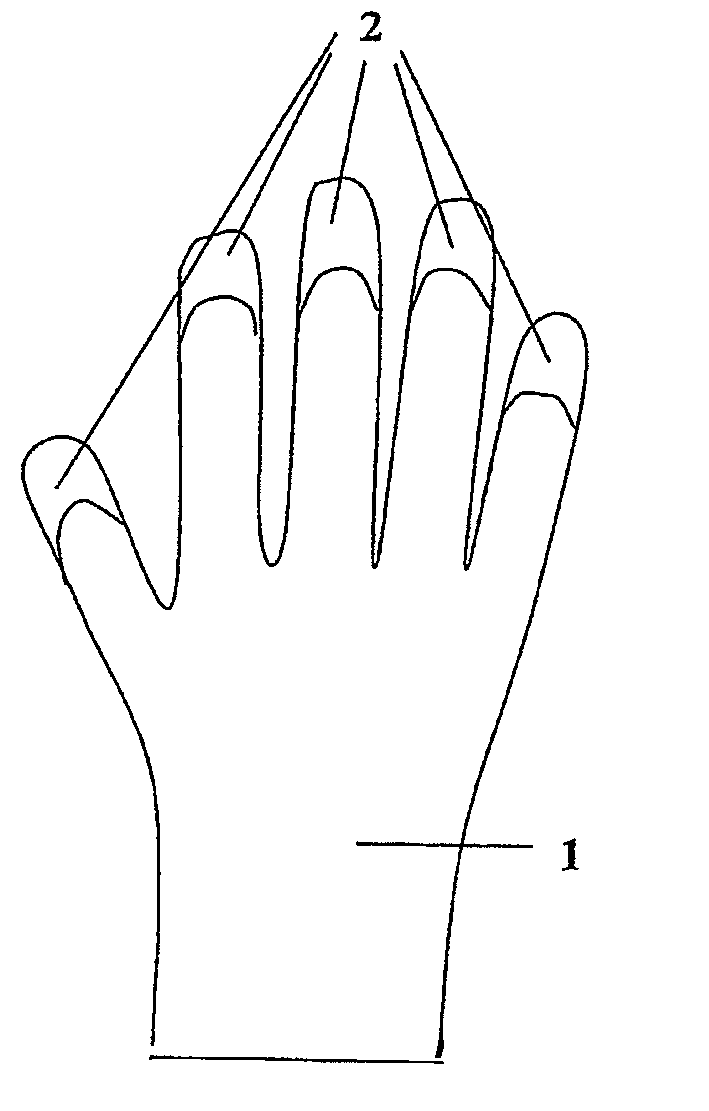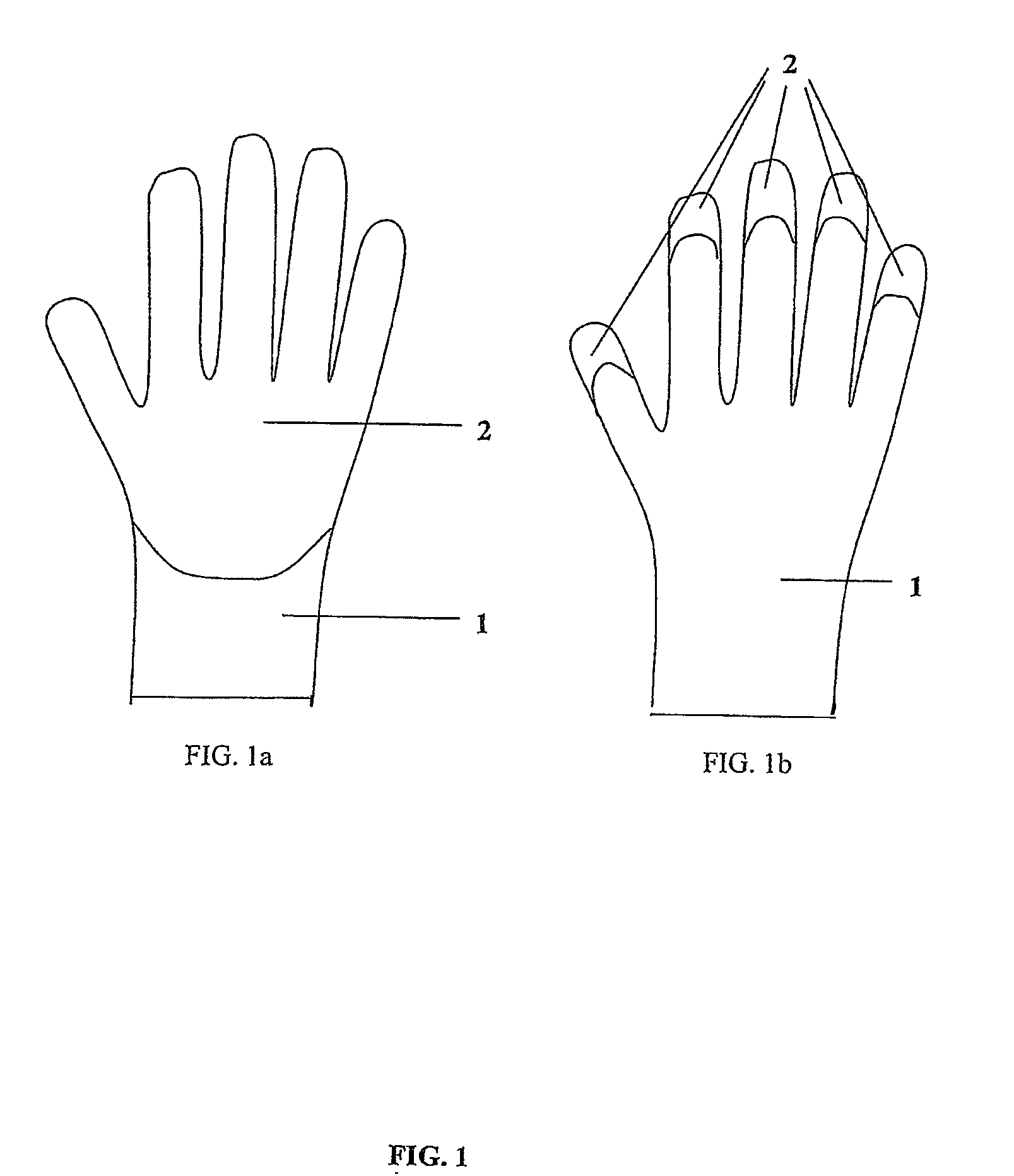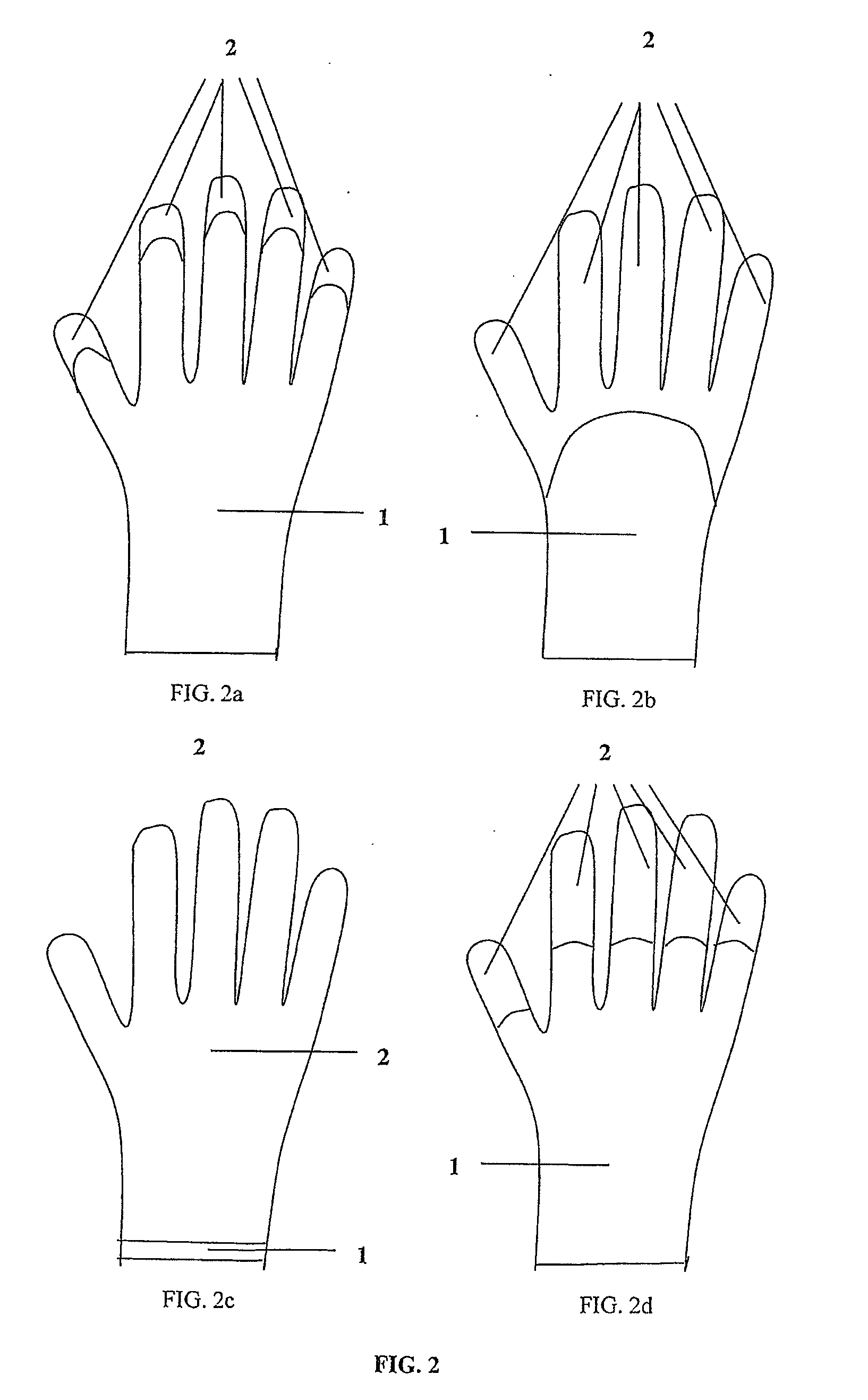Method and Article of Manufacturing A Waterborne Polyurethane Coated Glove Liner
- Summary
- Abstract
- Description
- Claims
- Application Information
AI Technical Summary
Benefits of technology
Problems solved by technology
Method used
Image
Examples
Embodiment Construction
[0024]FIG. 1 shows the present invention, wherein FIG. 1a illustrates the palm side elevation view of the present invention and FIG. 1b illustrates the dorsal side elevation view of the present invention which discloses a waterborne polyurethane coated glove liner comprising of:
[0025]a) a textile glove liner (1)
[0026]b) waterborne polyurethane (2)
[0027]The present invention as illustrated in FIG. 1 includes smooth-coating as well as foam-coating of waterborne polyurethane, which is free from solvents, DMF in particular and also silicone, and which is supported in part by the surface of a textile glove liner of several coating styles or preferences such as, but are not limited to palm-coated, knuckle-coated, full-coated and finger-coated as illustrated in FIGS. 2a, 2b, 2c and 2d respectively.
[0028]A process or method for making a liner supported waterborne polyurethane glove in accordance with various embodiments of the present invention is hereby disclosed. A suitable glove form can...
PUM
 Login to View More
Login to View More Abstract
Description
Claims
Application Information
 Login to View More
Login to View More - R&D
- Intellectual Property
- Life Sciences
- Materials
- Tech Scout
- Unparalleled Data Quality
- Higher Quality Content
- 60% Fewer Hallucinations
Browse by: Latest US Patents, China's latest patents, Technical Efficacy Thesaurus, Application Domain, Technology Topic, Popular Technical Reports.
© 2025 PatSnap. All rights reserved.Legal|Privacy policy|Modern Slavery Act Transparency Statement|Sitemap|About US| Contact US: help@patsnap.com



